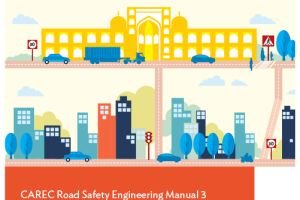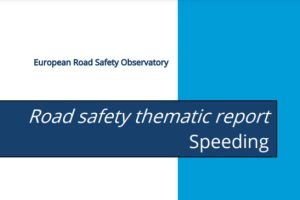Strategies to Tackle the Issue of Speed for Road Safety in the Asia-Pacific Region: Implementation Framework (ESCAP)

Overview
Strategies to Tackle the Issue of Speed for Road Safety in the Asia-Pacific Region: Implementation Framework (ESCAP)
As has been underscored at a number of key global events and in numerous documents published over the last decade, improving road safety is now an urgent global priority. The unfortunate reality is that road safety programmes and policies have failed to address the increase in the number of vehicles on roads and the average speed at which vehicles are travelling. This has exacerbated an already grave global road safety crisis.
The laws of physics relating to speed mean that all countries and regions would benefit from reductions in average vehicular speeds. Indeed, there is a direct correlation between vehicular speeds and the likelihood of people suffering physical harm, with the probability of crashes, injury and death rising as the speed of vehicles increases. Furthermore, vulnerable road users, including pedestrians, cyclists and motorcyclists, are all at high risk of severe or fatal injury in crashes, even at low speeds, because they are poorly protected. The harmful effects of speed also increase on wet, snowy or icy roads. However, any action taken to reduce vehicular speeds helps to reduce the number of crashes, injuries and fatalities, regardless of weather conditions and among all categories of road user.
Ideal speeds are lower than most road users think. Lower vehicular speeds are more economical than high speeds, and can enhance people’s environment, health and quality of life as a result of a reduction in costs associated with crashes, road maintenance, noise, fuel use, and emissions. There is also a turning point at which traffic flow improves with lower speeds.
A safe speed is one that is appropriate not only for the usage/type and quality of the road but also for a country’s vehicular fleet and the type and mix of the road users. The management of vehicular speed therefore includes setting speed limits that reflect those considerations and reduce the likelihood of death or injury in the event of a crash (these are known as survivable speed limits) as well as preventing speed limit violations (speeding).
For this report, a study was conducted to examine speed management in ESCAP member States in order to identify ways in which they can improve speed management. The study revealed that travel speeds on roads in those States are not controlled effectively through survivable speed limits, speeding enforcement, engineering interventions or vehicle safety measures.
ESCAP is the regional development arm of the United Nations and serves as the main economic and social development centre for the United Nations in Asia and the Pacific. Its mandate is to foster cooperation among its 53 members and 9 associate members. ESCAP provides the strategic link between global and country-level programmes and issues. It supports the Governments of the region in consolidating regional positions and advocates regional approaches to meeting the region’s unique socio-economic challenges in a globalizing world.
Global Resources Details
Strategies to Tackle the Issue of Speed for Road Safety in the Asia-Pacific Region: Implementation Framework (ESCAP)
Did you know?
82% of Road Crash Fatalities and Injuries in the economically productive age groups (15 - 64 years.)
82% of Road Crash Fatalities and Injuries in the economically productive age groups (15 - 64 years.)


